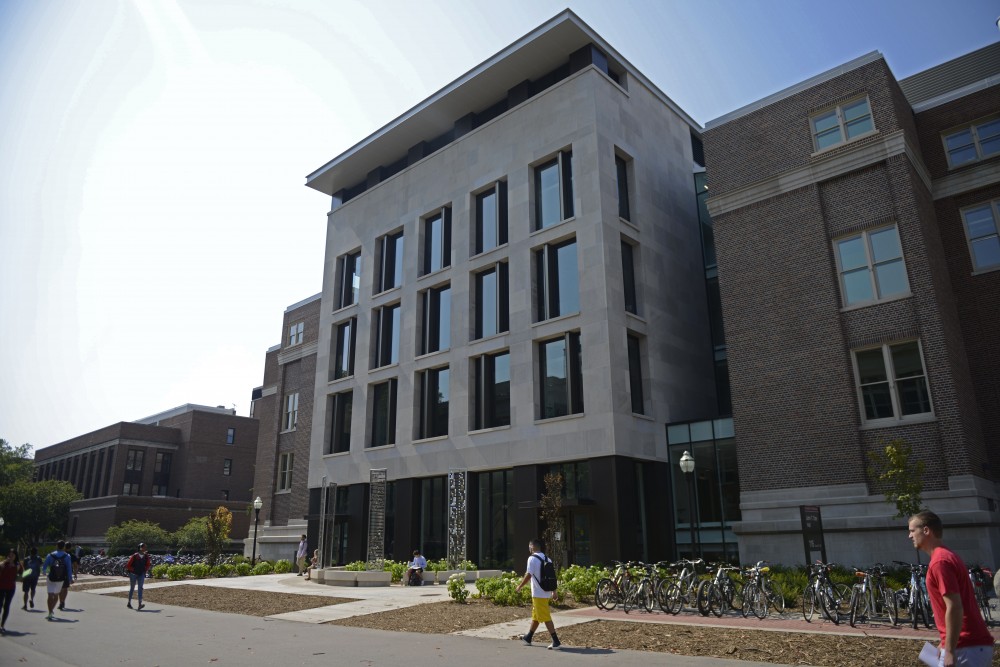A glittering, three-part sculpture that hides a scientific puzzle made by University of Minnesota professors welcomes students entering the east side of the newly renovated John T. Tate Hall, which opened for classes on Sept. 5.
Although still awaiting final touches, builders raced to complete the $92.5 million renovation to the former Tate Laboratory of Physics and prepare for this year’s more than 4,000 physics, astronomy and earth sciences students.
Academic additions include new research labs and equipment, classrooms and faculty and graduate offices. The renovated building also provides a public space for star-gazing and a rooftop space open to classes and others during public outreach nights.
“The labs were very obsolete, the classrooms very much outdated. What [the building] really badly needed was modern mechanical and electrical systems … modern classrooms,” said Kevin Ross, senior project manager for Campus Delivery Services.
Other renovations include a Gopher Way expansion under Church Street, connecting Tate and the Mechanical Engineering building, a project funded by the University’s Parking and Transportation Services, Ross said.
The Minnesota Legislature funded two thirds of the total project cost, and the University provided the remaining funds.

Projects funded by the legislature include the public art pieces at the building’s Church Street entrance. The sculptures, created by artist Catherine Widgery, double as a puzzle representing the two disciplines housed in the building.
The transition to Tate Hall consolidates the earth sciences and physics departments on campus. Before the construction, earth science students had classes in multiple buildings around the University.
“There were parts of our school of earth sciences that we seldom saw,” said Donna Whitney, head of the department of earth sciences. “The fact that we’re in this central location … will let us interact in a more powerful way with other parts of the University.”
Evan Skillman, professor and director of the Minnesota Institute for Astrophysics, said “we’re becoming reacquainted with everyone” after the renovation.
Ronald Poling, head of the school of physics and astronomy, said consolidating the disciplines was a “very natural combination.”
Built in 1926, the original John T. Tate Hall received additions to its wings in the 1960s. Besides a few cosmetic retouches, “the building hadn’t gone through any sort of major renovation at all in its lifetime,” Ross said.
For many professors, renovations have been a dream for decades.
“I have colleagues who remember from the ‘60s and even ‘50s being told that we were going to have a new building soon,” Whitney said. “This has been kind of a mythological event for us, and so to have it actually happen is very exciting,”
Students exploring the building said they would like to see more seating in common areas but are excited about the building’s renewed atmosphere.
Although classes are in session, the building is not quite done. Ensuring the building would be open for fall classes this year was a top priority for the planning committee.
This delayed furnishing student gathering areas, constructing some labs and adding other finishing touches until after classes began.
“The critically important thing was that we have to be ready for our classes, and [the planning committee] held us to that by giving us an office that does not have a reception desk,” Poling said. “But we do have lecture halls.”
The building’s official grand opening is set for March 2018.








